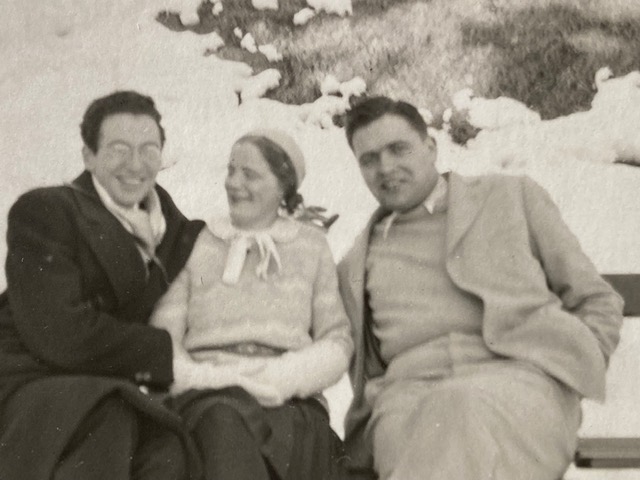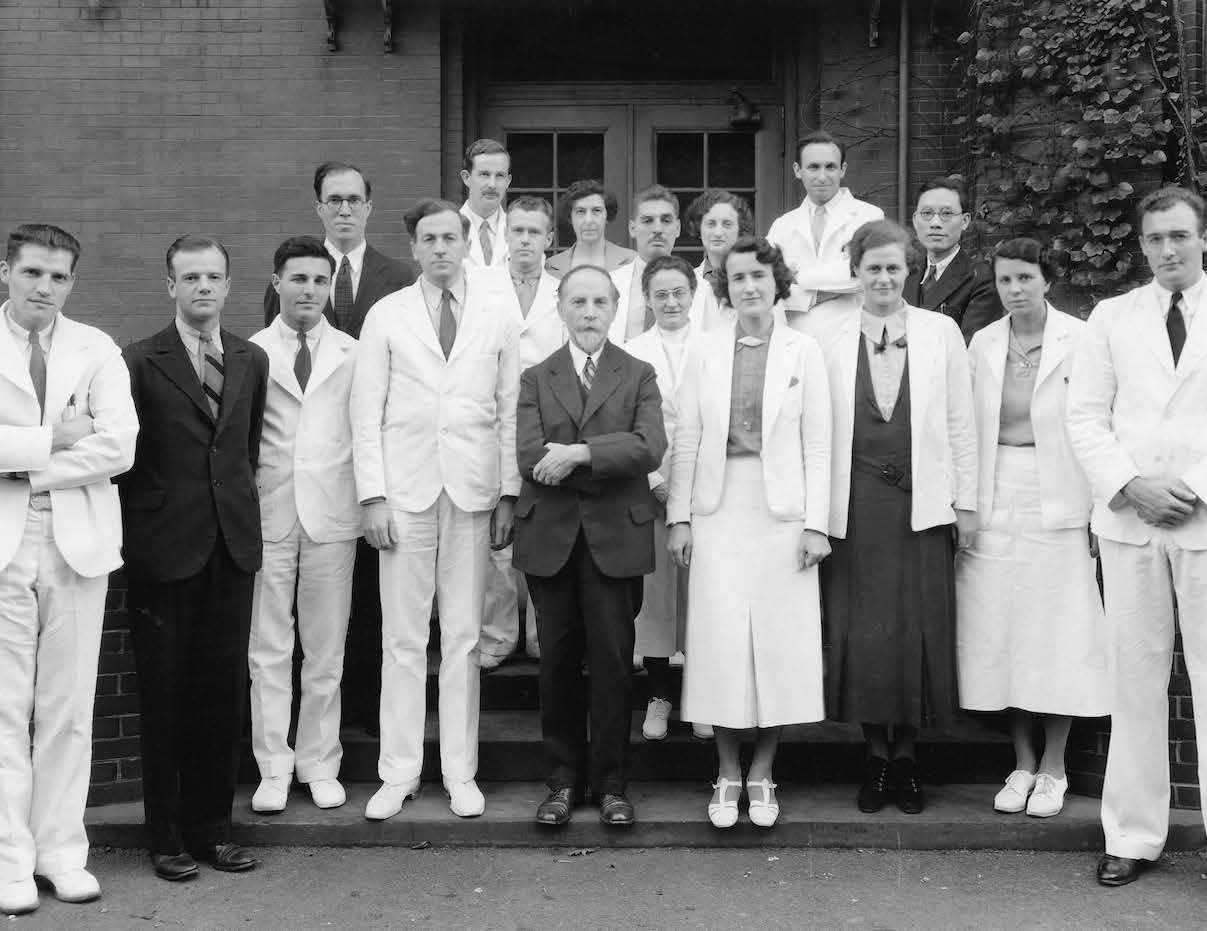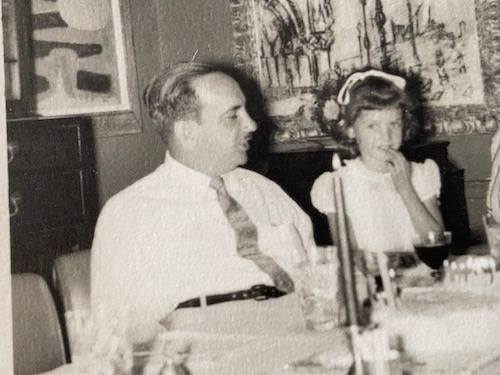
Rorschach's Psychodiagnostics: The Story of the 1942 English Translation
Philip J. Keddy, PhD, is an Adjunct Faculty member in the Wright Institute Clinical Psychology Program. He teaches one of the five parallel sections of Adult Assessment. The second trimester of this course focuses on the Rorschach inkblot test, using the Rorschach-Performance Assessment System (R-PAS), which was released in 2011. For the past several years Dr. Keddy has been heading a team (Rita Signer, Philip Erdberg, and Arianna Schneider-Stocking) to do a new, annotated, translation of Hermann Rorschach's 1921 book, Psychodiagnostics. This is a 100th-anniversary edition of the book in which Rorschach introduced his inkblot test. It is being published by Hogrefe, the publisher of the original Rorschach test plates, and will be available in the U.S. soon. Click here to read more about the new translation, and for information on purchasing via Hogrefe.
The following story is about the two translators of the only previous English translation of the book, which was published in 1942. This year is the 80th anniversary of that translation. Since that first English translation, there have been translations in a half-dozen other languages as well.
By Philip J. Keddy, PhD, Wright Institute Adjunct Faculty
When I first saw the title page for the 1942 English translation of Psychodiagnostics while in graduate school, I assumed that the two medical doctors credited on it were psychiatrists who worked with Rorschach's test. This turned out to be true of Paul Lemkau, but not Bernard Kronenberg. While doing background research for our new translation I was able to learn more about the stories of both men.
Phil Erdberg and I met Bernard Kronenberg's son, Stephen, an ophthalmologist in New York, and I communicated with one of his two daughters, Debra, an attorney in Ketchum, Idaho. Bernard Kronenberg (1911-1998) was a medical student when he did the basic or first draft translation of Psychodiagnostics. (The 1942 translation, like ours, was also a collaborative one.) Kronenberg became a prominent ophthalmologist in New York. He was not interested in psychiatry and never worked with the test. While in medical school in Berne between 1931 and 1935, he suffered a detached retina. The successful operation to repair it led to his interest in ophthalmology. (S. Kronenberg, personal communication, June 7 and 8, 2013). The story of his involvement with the translation is both remarkable and rather amusing.
According to Debra Kronenberg, her father was an incredible linguist who knew up to nine languages at one point in his life. Bellos observed that knowing five to ten languages seems to be "the effective limit in all cultures" (Bellos, 2011, p. 13), so Bernard was at the upper end of that range. He had come to the U.S. from Warsaw, Poland, at age 12. Bernard went back to Europe, to Berne in Switzerland, to study medicine because of the discriminatory quotas for the admission of Jews into American medical schools at the time.

Bernard had told Debra the story of how he came to translate Rorschach's book. When he left New York for medical school in Berne, his father gave him $500 to help with expenses. According to online inflation calculators, $500 in 1931 would equal close to $9,000 in 2021. Debra's grandfather, who had saved the money, was a precision machinist and a watchmaker for Bulova in New York. On a trip to Monte Carlo during his first year of medical school, Bernard gambled and lost the money. Debra did not hear how her father met the original publisher of Rorschach's book, Hans Huber, but knows he was delighted to have the opportunity to do translation for him. Bernard needed the money and could avoid having to tell his father about the losses in Monte Carlo. Debra recalled that her father remained friends with Hans Huber and his daughter, Janine. One picture of Bernard Kronenberg in Switzerland with the publisher Hans Huber in the 1930s and another picture of Debra Kronenberg with Hans Huber when he later visited the family in New York accompany this article, courtesy of Debra Kronenberg. We do not know exactly when Kronenberg did his translation. Stephen and Debra believe their father did it when he was in medical school in Switzerland, which would mean between 1931 and 1935. They gave me the manuscript that was found among their father's effects after he died, which will be donated to the Rorschach Archives on their behalf. There are both handwritten and typed pages, but no dates.

In his obituary in the New York Times, Paul V. Lemkau (1909-1992), the managing editor and translator of Psychodiagnostics, was described as a "psychiatrist and health administrator who was a leading advocate for treating mental health problems in community settings" (Lambert, B., 1992). He earned his medical degree at Johns Hopkins in 1935. During World War II he served as an Army psychiatrist at Walter Reed Hospital and in Europe. Lemkau was founding chairman of the mental hygiene department at Johns Hopkins and outlined his concept of community mental health in his 1949 text, Mental Hygiene in Public Health. We know he had had experience with the test before doing the translation. One of his five children, Mary Lemkau Horn of Micanopy, Fla., became a psychologist. Paul Lemkau mailed her a package in the mid-1980s with a note saying "Happy you can use these since I seldom do... These are the Rorschach cards I used in the 30s and the books used in the English translation." (M. Lemkau Horn, personal communication, 6.17.13).
Paul Lemkau's parents had emigrated from Germany and so German was the first language in his home. Mary suspects her father worked with Kronenberg's translation because he was further away from his use of German by then. As Mary recalled, her father grumbled about having to pay for the translation out of his own pocket! (Personal Communication, June 8, 2013). The relationship between Kronenberg, Huber, and Lemkau and the timeline for the work on the translation remains a mystery. It is noteworthy that the translation was published by Hans Huber in Switzerland in 1942. World War II had started in Europe in 1939, and the U.S. entered it on December 11, 1941. But tensions had been rising in Europe much earlier. Hitler had been appointed Chancellor of Germany in 1933, when Kronenberg was in Berne.
Switzerland remained neutral through the war and was not invaded by the Nazis. On the title page of the 1942 translation Paul Lemkau is affiliated with the Phipps Psychiatric Clinic, but after the U.S. went to war he joined the Army and was assigned to Walter Reed Hospital in Bethesda, Maryland (Mandell, W, 1995). By the time the book came out Lemkau could have already started at Walter Reed. Lemkau may have done most if not all of his work on the translation before the U.S. entered the war and before he moved to Walter Reed. And he may also have wanted the affiliation to be the Phipps because that was where he trained with Dr. Adolf Meyer.
In the Preface to the 1942 translation, Lemkau wrote, "We are especially grateful to Dr. Adolf Meyer who encouraged us to take up the task and who has continued to be interested in our progress." Mary Lemkau Horn knows that Adolf Meyer (1886-1950) was a very influential teacher and important mentor for her father. Meyer had been the founding Director of the The Phipps Clinic and was still there when Lemkau trained with him.
Meyer was Swiss, as was Rorschach, and was born near Zurich. While in medical school in Zurich, he came under the influence of August Forel, then director of the Burghölzli asylum. Forel was Eugen Bleuler's predecessor: Both Jung and Rorschach were to study or train with Eugen Bleuler.

Meyer emigrated to the U.S. in the 1890s. He met Freud and Jung when they came to lecture at Clark University in Massachusetts in 1909, and for the opening ceremony of the Phipps Clinic in 1913, Bleuler was one of the speakers (Mora, 1975). Meyer probably learned of Rorschach through Bleuler. Meyer emphasized studying the patient's life history and was known for a commonsense philosophy that contributed to the community mental health movement. By encouraging the translation of Rorschach's book, Meyer also promoted the use of the inkblot test in the English-speaking world. Theodore Lidz (1985) wrote that "Adolf Meyer was a major force in molding psychiatry into its current form; his teachings are so solidly incorporated into American psychiatric theory and practice that the extent of his influence is often overlooked."
For a more recent and comprehensive source on Meyer, see Lamb, S. (2014) Pathologist of the mind: Adolf Meyer and the origins of American psychiatry. Lamb concluded, similarly to Lidz, that when examining the "origins of American psychiatry—within medicine or popular culture ... all roads lead to Adolf Meyer."
References
Bellos, D. (2011). Is that a fish in your ear? Translation and the meaning of everything. Faber and Faber.
Lamb, S. (2014) Pathologist of the mind: Adolf Meyer and the origins of American psychiatry. Johns Hopkins Press.
Lambert, B. (1992, April 30). Dr. Paul V. Lemkau Dies at 82; Promoted mental health clinics. The New York Times. https://www.nytimes.com/1992/04/30/us/dr-paul-v-lemkau-dies-at-82-promot...
Mandel, W. (1995). The realization of an idea. Department of mental health: Origins of mental health. Johns Hopkins Bloomberg School of Public Health. https://publichealth.jhu.edu/departments/mental-health/about/Origins-of-...
Mora, G. (1975). Adolf Meyer. In A.M. Friedman, H.I. Kaplan, & B.J. Sadock (Eds.) Comprehensive Textbook of Psychiatry (pp. 626-632) (2nd ed., Vol 1). Williams & Wilkins Co.
--
This article originally appeared in Volume 31, Issue 2 of The Bulletin of the International Society of Rorschach and Projective Methods.
